This article was medically reviewed by Sarah Gehrke, RN, MS. Sarah Gehrke is a Registered Nurse and Licensed Massage Therapist in Texas. Sarah has over 10 years of experience teaching and practicing phlebotomy and intravenous (IV) therapy using physical, psychological, and emotional support. She received her Massage Therapist License from the Amarillo Massage Therapy Institute in 2008 and a M.S. in Nursing from the University of Phoenix in 2013.
There are 11 references cited in this article, which can be found at the bottom of the page.
This article has been viewed 49,815 times.
Someone with attachment disorder has trouble forming and maintaining healthy relationships. Attachment disorders are generally rooted in childhood and may impact a person’s ability to communicate with others, show affection, and demonstrate trust or empathy. Having a loved one with an attachment disorder can be challenging. However, by educating yourself about these conditions and learning how to effectively deal with children or adults with attachment disorders, you can enjoy a happier, healthier relationship.
Things You Should Know
- It can be difficult to maintain stable relationships when you have an attachment disorder, so don’t take things personally if you try to help and it doesn’t always go exactly the way you planned.
- People with attachment disorders will appreciate it if you’re emotionally available, forgiving, and always willing to talk.
- If you have a child with an attachment disorder, it’s exceptionally important that you’re consistent when it comes to setting boundaries and enforcing consequences, since children with attachment disorders need predictability to develop and grow.
- Creating a routine and scheduling every day in advance will dramatically make things easier for your child, since knowing what happens next will make it easier for them to relax and process interactions.
Steps
Getting Educated
-
1Read up on attachment theory. To help someone with attachment disorder, it’s important to understand what attachment disorder is, what causes the condition, and how the condition differs from healthy attachment. By educating yourself about the different types of attachment and the way each develops, you’ll empower yourself to better understand and support your loved one.[1]
- There are many resources available for learning about attachment theory. Web articles are easy to find and accessible to non-experts. Once you know the basics, journal articles and books can provide a deeper look at attachment theory.
- Some books on attachment theory include When Love Is Not Enough: A Guide to Parenting With RAD-Reactive Attachment Disorder by Nancy L. Thomas, Stand Alone by P.D. Workman, and Detachment: An Adoption Memoir by Maurice Mierau.[2]
-
2Understand the causes of attachment disorders. Attachment disorders are caused by a failure to bond with a parent or primary caregiver in early childhood, usually before the age of three. There are many different potential causes for attachment disorder.
- Abuse or neglect can cause attachment disorder, but so can parental depression, illness, or emotional unavailability; changes in caretakers, including adoption and foster care situations; or the hospitalization of the child.[3]
- Attachment disorder isn’t always the result of bad parenting. Sometimes the circumstances that cause attachment disorder are unavoidable. However, if the child is too young to understand what is happening, he or she may perceive the event as abandonment.
- Be aware that attachment issues usually start in infancy. If the caregiver does not provide an infant with comfort when they are distressed, then they may develop attachment issues. These issues can vary depending on the way that the caregiver responds to the child.[4]
Advertisement -
3Know the different types of attachment disorders. Though all attachment disorders stem from feeling abandoned or uncared-for as a child, different people may exhibit different symptoms. Some people act withdrawn or angry to cope with their emotions, while others lose their sense of social inhibition but still have trouble expressing or accepting genuine affection.[5] The four types of attachment are secure, avoidant, reactive, and disorganized.[6] [7]
- Secure attachment is when the child’s caregiver is caring, sensitive, and responsive. This enables the child to feel secure in their relationship with the caregiver and use this experience to for healthy relationships outside of their relationship with the caregiver.
- Avoidant attachment is when the caregiver responds negatively to the child’s emotions or ignores them. This causes the child to avoid the caregiver when they feel distressed.
- Reactive attachment is when the caregiver responds to the child in inconsistent ways, so the child will act out or amplify their emotions to get the caregiver to pay attention.
- Disorganized attachment is when the caregiver is frightening, frightened, rejecting or unpredictable. This causes the child to fear the caregiver and feel anxious about approaching them for comfort. The child may also develop controlling behaviors to help them cope with their feelings.
Helping a Child with Attachment Disorder
-
1Make an appointment with a pediatrician. Attachment disorder can be confused with a number of other conditions, including autism and depression, so it’s important to get a diagnosis from a professional.
- Your child’s pediatrician can refer you to a psychiatrist who can evaluate the child and confirm whether they have attachment disorder. A mental health professional can also provide guidance for a personalized recovery plan after observing the child directly.[8]
- The presence of another disorder or condition shouldn't rule out attachment disorders. For example, it's possible for a child to be autistic and have an attachment disorder at the same time.
-
2Create routines to give your child a sense of consistency. Children with attachment disorder don’t feel like they can trust or rely on other people. Help change their mindset by enforcing routine and consistency in their life.
- For children with attachment disorder, life may seem unstable and scary, so by providing them structure, you also give them a comforting sense of regularity and stability.[9]
- Make sure your child is getting plenty of sleep, exercise, and healthy foods. These healthy habits can help to improve your child’s mood and behavior. They may also find it easier to cope with challenging situations.[10]
-
3Set consequences for undesirable behaviors. Children with attachment disorder may lash out at others in anger, or they may lie or otherwise manipulate people. These behaviors are a reflection of the trauma they have undergone, not their innate character or your ability as a parent or caretaker.
- Make it clear that these behaviors are not OK with you, and set fair but firm boundaries on what kind of conduct you expect from the child. A well-defined set of rules and consequences will give the child a much-needed sense of stability in their life and help them overcome these negative behaviors.[11]
-
4Give praise and physical touch often. Often attachment disorder develops when a child does not receive enough attention, affirmation, or affectionate touch from a parent or caregiver. Break this pattern by offering the child supportive physical touch such as hugs and verbal appreciation for good behavior. This can help them feel safe, accepted, and loved.
- Many children with attachment disorder are not as mature as expected for their age. They may respond well emotionally to communication styles suited for younger children. For instance, when a child is upset, holding and rocking them might be a better strategy than talking though the problem.[12]
- Some children with reactive attachment disorder do not respond well to praise because they perceive it as a reinforcement of a power dynamic that puts them at a disadvantage. If this is the case with your child, instead of praising them, shift your focus to appreciation of their positive behaviors.
-
5Participate in family therapy. Family therapy is the most effective type of therapy for helping a child heal from attachment disorder. Individual therapy may not be as helpful because the child could distort the truth or withhold necessary information from the therapist.[13]
- When parents are present at every therapy session, they can make sure the therapist receives an accurate picture of what is going on. Family therapy is also beneficial because it involves the parents in recovery.
- Family therapy sessions can educate parents about what caused their child’s behavior and what they can do to help their child form healthy attachments.
Dealing with Attachment Disorder in Relationships
-
1Be emotionally available. Someone with attachment disorder has undergone a great deal of emotional trauma, some of which may still be deeply buried in their psyche. The best thing you can do to support a partner with attachment disorder is to be there for them emotionally, even if you don’t always understand what they’re going through.
- Encourage them to express themselves freely, ask questions when you don’t understand something they say, and validate their emotions. This will help your partner trust you.
- Say things like “I want to know how you are feeling right now?” or “You seem upset…Talk to me about that.”
-
2Set and respect personal boundaries. It takes clear communication to maintain a relationship with a person who has attachment disorder. You and your partner likely perceive some things in very different ways. Certain behaviors of theirs may be hurtful or upsetting to you, and vice versa. Talk with your partner and establish boundaries for which behaviors you’re comfortable with in your relationship and which you aren’t.
- Setting personal boundaries shouldn’t mean that you and your partner never work to grow beyond your current emotional state. To maintain a healthy relationship, the person with attachment disorder will have to face their issues and learn to trust others at some point. However, don’t try to force your partner into this – they must be ready and willing to work on the issue themselves.[14]
-
3Support your own mental and physical health. Being in a relationship with someone who has attachment disorder can be emotionally exhausting at times. To keep your stress levels low, take time for yourself regularly and work on maintaining your own health. Eating a balanced diet, exercising regularly, getting enough sleep, and staying away from drugs and alcohol can help keep your emotions on an even keel.
-
4Participate in individual or couples therapy. Even if you don’t have attachment disorder yourself, therapy can help you understand your partner better, learn strategies for effective communication, and work through your own emotions about your relationship.
- If you attend couples therapy with your partner, a therapist can help you identify negative patterns in your behavior with each other and find ways to avoid repeating those patterns.[15]
References
- ↑ http://greatergood.berkeley.edu/article/item/how_to_stop_attachment_insecurity_from_ruining_your_love_life
- ↑ http://www.goodreads.com/list/show/73163.Attachment_Disorder
- ↑ http://www.aacap.org/AACAP/Families_and_Youth/Facts_for_Families/FFF-Guide/Attachment-Disorders-085.aspx
- ↑ https://www.ncbi.nlm.nih.gov/pmc/articles/PMC2724160/
- ↑ http://emedicine.medscape.com/article/915447-overview
- ↑ https://www.ncbi.nlm.nih.gov/pmc/articles/PMC2724160/
- ↑ https://www.uea.ac.uk/providingasecurebase/attachment-patterns
- ↑ http://www.mayoclinic.org/diseases-conditions/reactive-attachment-disorder/basics/tests-diagnosis/con-20032126
- ↑ http://www.helpguide.org/articles/secure-attachment/attachment-issues-and-reactive-attachment-disorders.htm
- ↑ https://www.helpguide.org/articles/secure-attachment/attachment-issues-and-reactive-attachment-disorders.htm
- ↑ http://www.helpguide.org/articles/secure-attachment/attachment-issues-and-reactive-attachment-disorders.htm
- ↑ http://www.helpguide.org/articles/secure-attachment/attachment-issues-and-reactive-attachment-disorders.htm
- ↑ http://www.reactiveattachmentdisordertreatment.com/ssi/article3.html
- ↑ http://greatergood.berkeley.edu/article/item/how_to_stop_attachment_insecurity_from_ruining_your_love_life
- ↑ http://www.center4familydevelop.com/adults.htm
- ↑ https://www.ncbi.nlm.nih.gov/pmc/articles/PMC2724160/
- ↑ https://www.helpguide.org/articles/secure-attachment/attachment-issues-and-reactive-attachment-disorders.htm

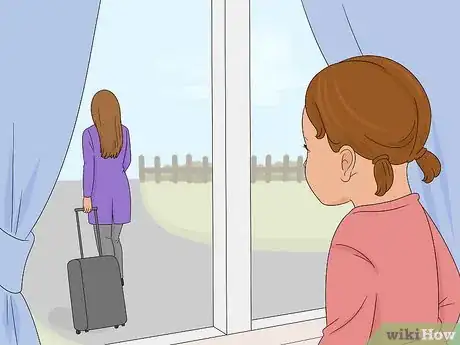
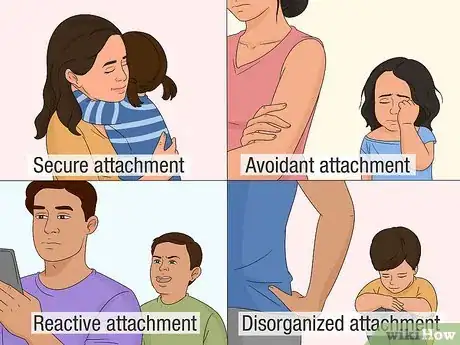
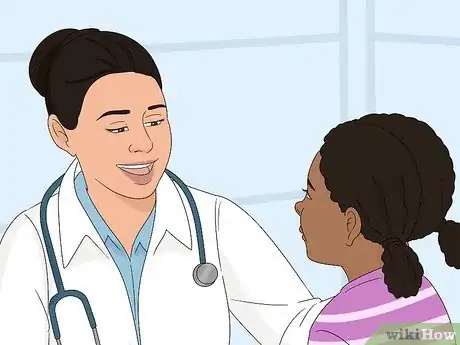
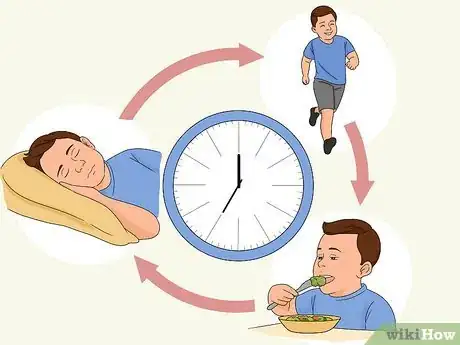
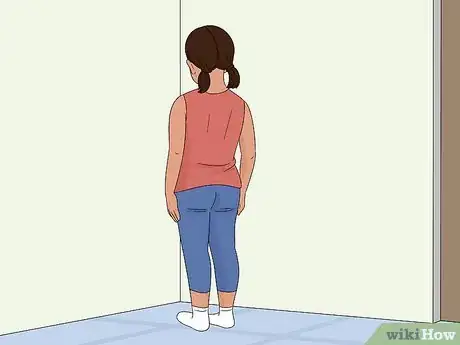
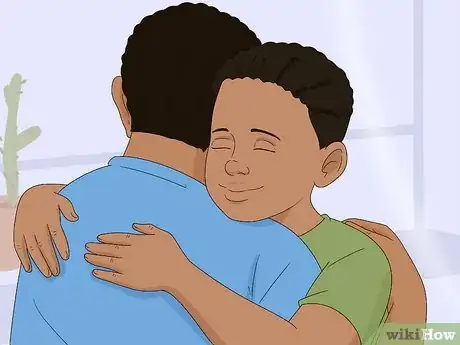
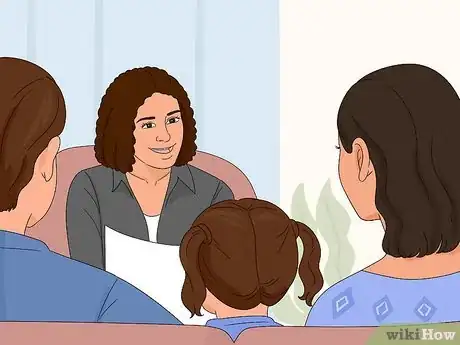

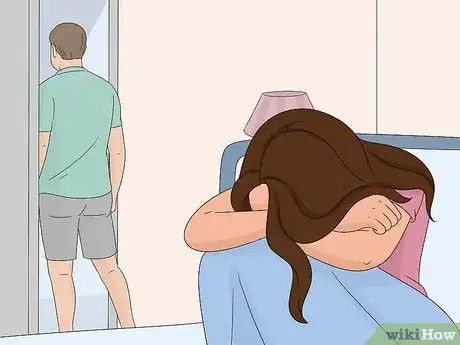







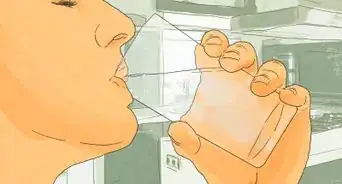


-Step-17-Version-2.webp)
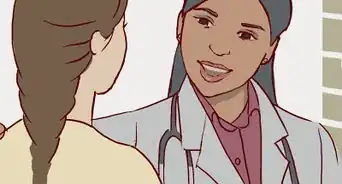
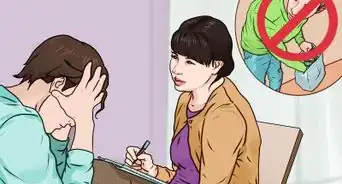


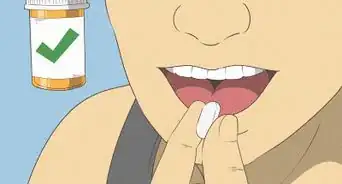














































Medical Disclaimer
The content of this article is not intended to be a substitute for professional medical advice, examination, diagnosis, or treatment. You should always contact your doctor or other qualified healthcare professional before starting, changing, or stopping any kind of health treatment.
Read More...